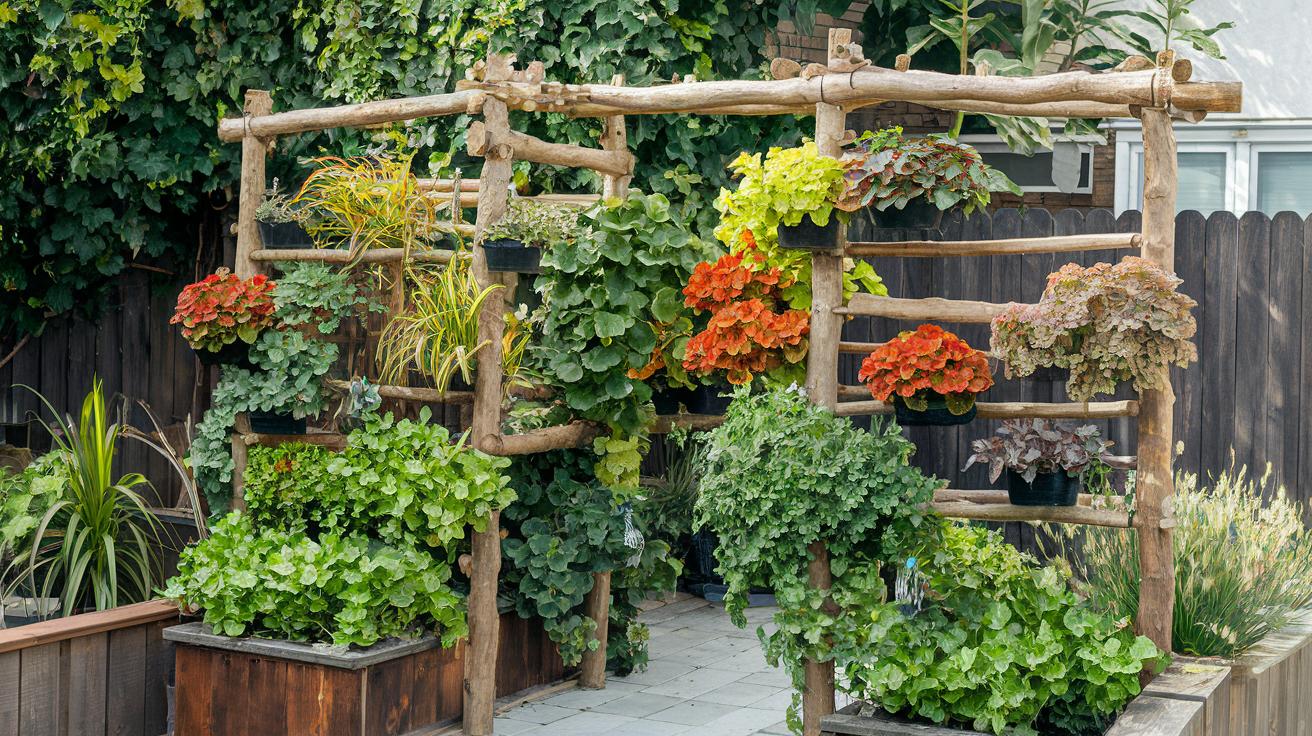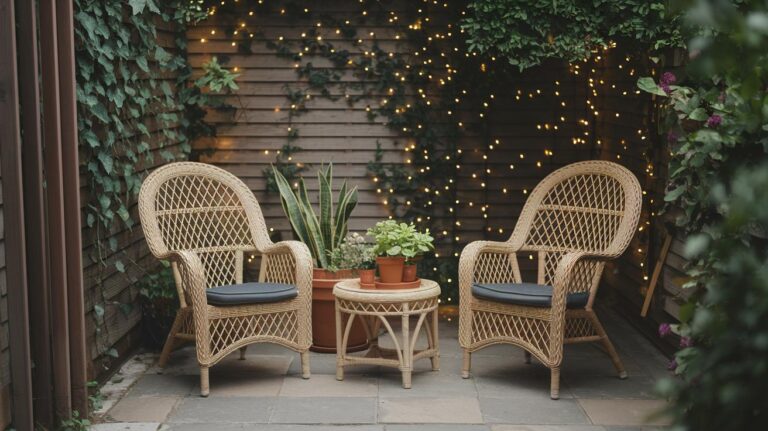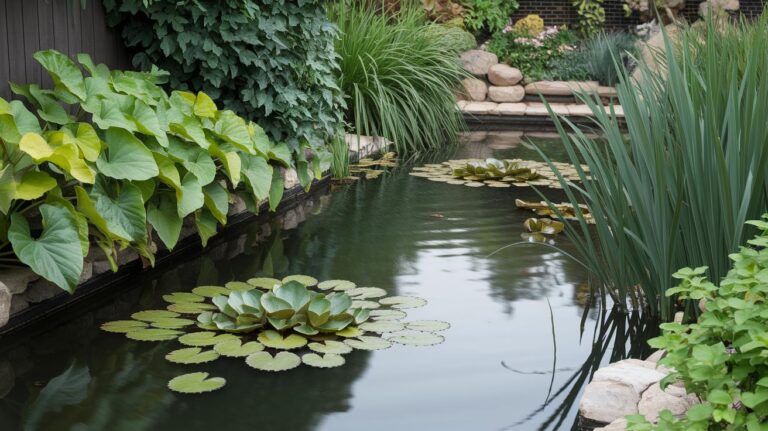Best Materials For Vertical Garden Structures Awesome Picks
Hey neighbor, ever thought about turning a blank wall into a green masterpiece? It takes more than nailing a random board up there. A living wall needs real muscle to stay standing through sun, rain, and all the seasons. I still remember the first time I caught that cedar frame’s warm, forest-like scent and felt like hugging it.
You’ve got wood (cedar: aromatic and rot-resistant).
Metal (aluminum: light and reflective) gives off a cool shine on hot days.
PVC plastic pockets (weatherproof and easy-to-clean) hold moisture like magic.
Breathable fabric pockets let roots breathe and hug the earth.
Fiber-reinforced resin composite (a mix of plastic and wood fibers) brings extra strength without the extra weight.
But which frame really holds heavy soil (dirt and decayed leaves that feed your plants)? Which one laughs at sun and rain while staying kind to your wallet and the planet? By the way, my cat loves napping next to our metal frame because it stays cool all afternoon.
In the next section, I’ll walk you through my top five picks side by side so you can pick the perfect material for your vertical oasis.
Comparative Overview of Materials for Vertical Garden Structures
Want a garden wall that looks good and stands up to sun, rain, and time? Here’s a quick peek at five top materials you can use for living wall panels. You’ll find how long they last, how much weight they can carry, what they cost, how they look, and how they affect the planet.
| Material | Durability | Weight Capacity | Weather Resistance | Cost Range | Aesthetic Appeal | Environmental Impact |
|---|---|---|---|---|---|---|
| Wood (cedar, redwood) | 10–15 years (with annual sealant) | 50–80 lbs | Good (needs yearly sealing) | $30–100 | Warm, natural | Eco-friendly if sustainably sourced |
| Metal (galvanized steel, aluminum) | 15+ years | 100+ lbs | Excellent (with protective coating) | $50–200 | Sleek, modern | Recyclable but higher carbon footprint |
| Plastic (PVC, recycled) | 5–10 years (UV prone) | 20–50 lbs | Good (waterproof) | $20–100 | Varied colors | Recyclable yet some degrade |
| Fabric (felt, polyester) | 2–3 years | <20 lbs | Fair (drains well) | $30–150 | Soft, pocketed | Biodegradable options available |
| Composite (wood-plastic blend) | 15–20 years | 60–90 lbs | Excellent (UV-resistant) | $100–300 | Wood-like finish | Long-lasting, less biodegradable |
Wood panels made from cedar or redwood smell fresh when you brush past them. They can last up to 15 years if you apply a sealant (waterproof coating) every spring. You’ll hold about 50 to 80 pounds of soil without them sagging. Just watch for soft spots where moisture hangs around.
Metal frames like galvanized steel or aluminum feel solid under your hand. With a protective coating (rust guard), they shrug off rain and sun for 15 years or more. You can pack in over 100 pounds of plants and soil. It’s smart to peek at them once in a while for any rust spots.
Plastic panels in PVC (polyvinyl chloride) or recycled blends start light and easy to mount. They cost as little as $20 and come in bright colors that won’t fade right away. But the sun’s UV (ultraviolet light) rays can make them brittle over time unless they’re UV treated.
Fabric pockets made from felt (thick cloth) or heavy polyester feel soft and cozy against your garden wall. They let air and water flow through, so your herbs can breathe. You’ll need to swap them out after a few seasons, usually two or three, because they wear down where water drips most.
Composite boards blend wood fibers with plastic for a lasting look that mimics real wood. They resist sun damage thanks to UV protection and can hang onto 60 to 90 pounds of soil. They cost more up front but need almost no upkeep. Um, did I mention they look just like wood without the yearly sealing?
Wooden Options for Vertical Garden Structures

You’ll love the warm grain of a wooden slat backing or outdoor-grade plywood (a sturdy board that stands up to rain and sun) paired with your fresh herbs or ferns. Those smooth slats feel nice under your fingers as you shift pots around, almost like the wood is welcoming your touch.
Cedar planks are famous for durability (they resist rot and bugs). Just ask my neighbor, she’s had hers for years without a fuss. Redwood does the same trick, lasting a solid decade or more if you give it a coat of sealant (a waterproof finish) each spring. And every time you brush by, the soft cedar scent follows you through the garden.
Pressure-treated lumber strips (wood soaked in protective chemicals to guard against moisture) give extra defense when things get damp. They usually cost about $30 to $100, depending on grade and treatment, but that small investment pays off in years of worry-free growth.
Feeling crafty? Grab a shipping pallet (the wooden frame used to haul goods), give it a good scrub, and seal it well. Nail on a few extra boards, lean it against your fence or mount it on the wall, and voilà, an easy DIY herb wall that looks like you hired a pro.
Metal Frameworks for Vertical Garden Structures
You know those sturdy metal supports? Galvanized steel frames and aluminum grids easily hold over 100 pounds of potted plants. They stand firm when the wind howls and shrug off heavy rain without bending.
If you want to keep rust at bay, choose stainless steel mesh (strong wire netting) or connectors labeled rustproof at every joint. Have you checked the coating lately? Each season, scan for dull spots and brush on a rust guard (paint that stops corrosion) to freshen things up.
Small panel kits run about $50 and fit a few pots. Thinking bigger? A large trellis or custom metal grid can reach $200 or more, depending on metal thickness and finish. Worth it if you love a lush wall of green.
Here’s the fun part: clip planters onto the grid in straight rows or playful patterns. You can curve aluminum around a corner or stack steel frames sky-high for a mini-green tower. Ever tried a living privacy screen? This setup nails it.
Anchoring is simple, too. Mount brackets to your wall or give a freestanding frame a weighted base. Use galvanized steel fasteners (metal screws that resist rust and hold heavy weight) so they grip tight, even when the soil’s damp. No wobble!
Maintenance? Barely any. In spring, give the frame a gentle rinse. Recoat any chipped spots and tighten connectors if they feel loose. More time planting, less time scrubbing.
Want a splash of color? Pick powder-coated finishes in bright hues to match your style. Or go clear: a simple sealant keeps metal looking fresh and rust-free.
Synthetic Materials for Vertical Garden Structures

Plastic Panel Options
Have you ever held those garden panels that feel almost weightless? Rigid PVC (polyvinyl chloride, a tough plastic) frames and polypropylene (a sturdy plant-safe plastic) trays start around $20 to $100. They shrug off moisture, no rot, no mold. But bake them in full sun and they can get brittle. A spray-on UV-resistant coating slows sun damage and keeps panels flexible for up to ten years if you recoat every couple of seasons. Fiberglass-reinforced boards add extra stiffness, so even a row of leafy greens won’t make them sag.
Composite Material Choices
• Composite boards blend tiny wood fibers with plastic for a cedar-like look that lasts 15 to 20 years. No spring sealing. No winter wraps. Prices range from $100 to $300, depending on thickness and finish.
• Coconut coir bricks (coir means coconut fibers) work like mini sponges behind your planters. They hold water like a tiny reservoir and let roots breathe through natural fibers. After a few seasons, the coir breaks down and feeds your plants. Then you just pop in fresh bricks.
Many modular kits snap together in minutes, slot in framing pieces, click in trays, and add soil. You’ll skip heavy tools and still end up with a neat green wall. Some kits even include drip lines or simple irrigation pockets so you don’t have to fuss over watering. If you’re looking for a low-maintenance setup you can build on a Saturday afternoon, these plastics and composites are top contenders for a lively, long-lasting vertical garden.
Fabric and Other Flexible Materials for Vertical Garden Structures
Feel the soft felt pocket liners (thick fabric pockets) or sturdy polyester panels (heavy-duty synthetic sheets). They let roots breathe (air flow) and send extra water sliding out through drainage holes at the bottom. Herbs and succulents love it here. You’ll see bright green leaves popping out of each pocket like a friendly wave.
And guess what? Moisture retention layers and wicking fabric (that’s fabric that pulls water up) act like tiny sponges under your plants. They grab water from a drip line or bottom reservoir so you don’t have to water every day. Think of each pocket as a little self-watering planter that tucks the perfect amount of moisture right under the surface.
Biodegradable liners (they break down in 2–3 years) feed your plants as they compost. You’ll swap them out on that schedule. It’s a small trade-off for a fully compostable backing that’s good for your garden and the planet.
Each pocket can hold up to 20 pounds of soil and plants. So leave giant tomatoes or zucchini on the ground. Stick to lighter crops like thyme, lettuce, or small blooms instead. You can expect to spend about $30 to $150 on one panel, depending on how thick the material is and how many pockets it has.
Hanging these panels is a breeze. Secure a rail or hooks to your wall, slip the panel into place, fill each pocket with potting mix (a blend of soil and compost), and clip on your irrigation tube. Oops, spilled a bit of soil there. Back to business. Before you know it, you’ll have a light, airy living wall that you can refresh every season.
Key Considerations for Selecting Vertical Garden Materials
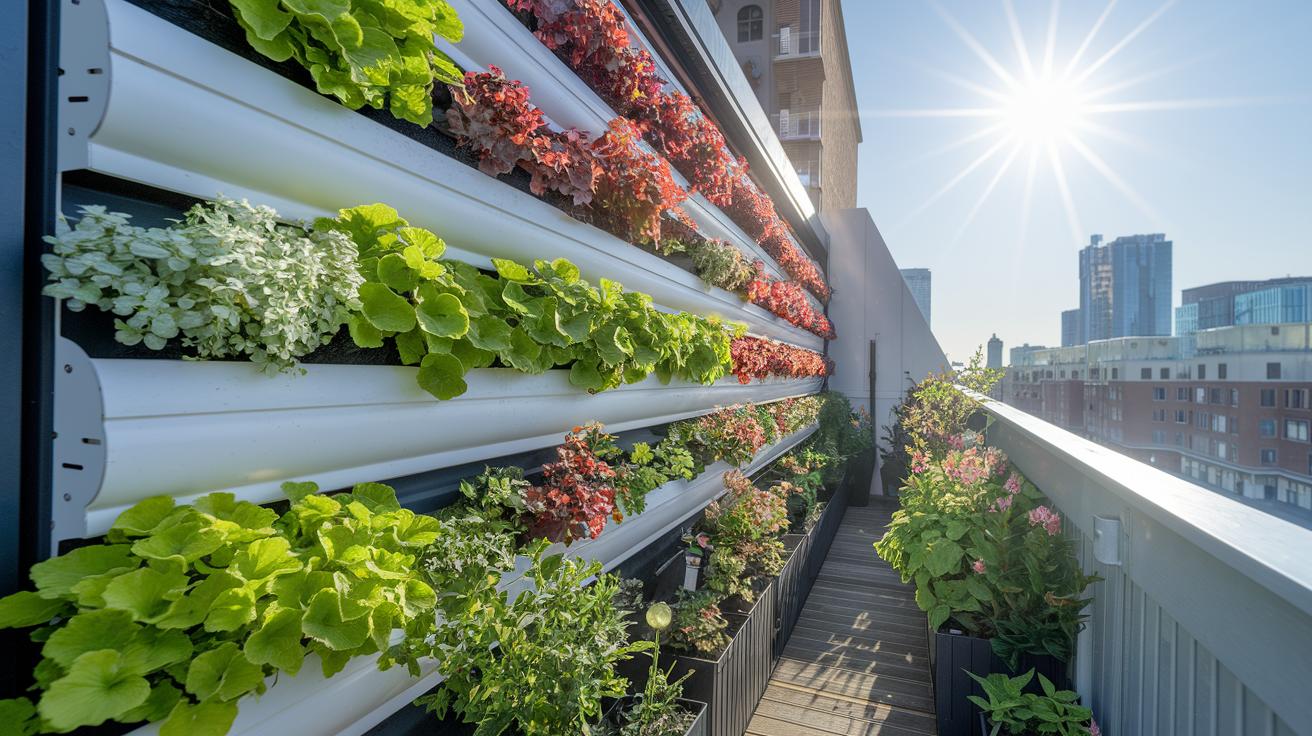
Ever peeked at a vertical garden and wondered how to keep it happy? You need materials that stop moisture, block sun damage, let extra water flow out, hold up heavy plants, and won’t rust. Here’s a quick list of the big ideas you’ll see in each section below.
- A waterproof membrane (thin layer that keeps water out) behind panels to keep your wall dry
- A UV-resistant coating (sunproof layer) on plastic or composite panels so they don’t fade or crack
- A drainage layer, like geotextile fabric (breathable cloth) or small weep holes to let extra water escape
- Panels rated for wet soil and plant weight so they don’t sag under pressure
- Rust-resistant brackets and stainless steel connectors to keep everything secure
| Consideration | Purpose | Example |
|---|---|---|
| Waterproofing | Keeps walls safe from water damage | Hidden membrane (water-blocking layer) |
| UV Protection | Prevents panels from fading or cracking | UV-resistant coating (sunproof layer) |
| Drainage | Stops roots from sitting in soggy soil | Geotextile fabric layer (breathable cloth) |
| Weight Rating | Makes sure panels support wet soil and plants | Panels rated for 100+ pounds |
| Corrosion Resistance | Keeps hardware from rusting over time | Stainless steel screws and brackets |
Best Materials For Vertical Garden Structures Awesome Picks
Ready to turn a blank wall into a leafy wonder? I’m sharing my go-to steps for a strong, happy vertical garden.
First, measure and mark each spot per your wall’s load specs. I use anchor bolts (heavy-duty screws that grip solid walls) rated for 20 to 50 pounds per square foot. You know, it helps my plants stay safe. Next, drill holes and pop in wall anchors (plastic sleeves that spread behind drywall) or pour concrete bases if you’re going freestanding.
Then attach brackets or snap in prefab frames, following the manufacturer’s guide like a simple puzzle. Tuck a waterproof membrane (a thin plastic layer) or lay a drainage mat behind panels so extra water runs off the wall. No more soggy spots.
Now secure panels or pots with rust-resistant screws or hooks. Grab your level and make sure each row sits straight. Finally, hook up irrigation or drainage lines, run water through, and watch for any drips or leaks.
And don’t forget a quick seasonal check to keep your garden tip-top. Ever had a fern droop because a loose bolt let go? A little tune-up now saves big headaches later.
Go over removable frames and tighten any loose hardware. Brush on rust guard to exposed metal bits (it’s like armor against moisture). Swap out soil liners (the cloth or mats that hold dirt) every year before they break down. Sweep away leaves so water never hangs around and pokes holes in your wall.
If you spot a tear in the waterproof layer, patch it right away. You’ll thank yourself when no sneaky leaks sneak in.
Purchasing vs DIY Sourcing for Vertical Garden Materials
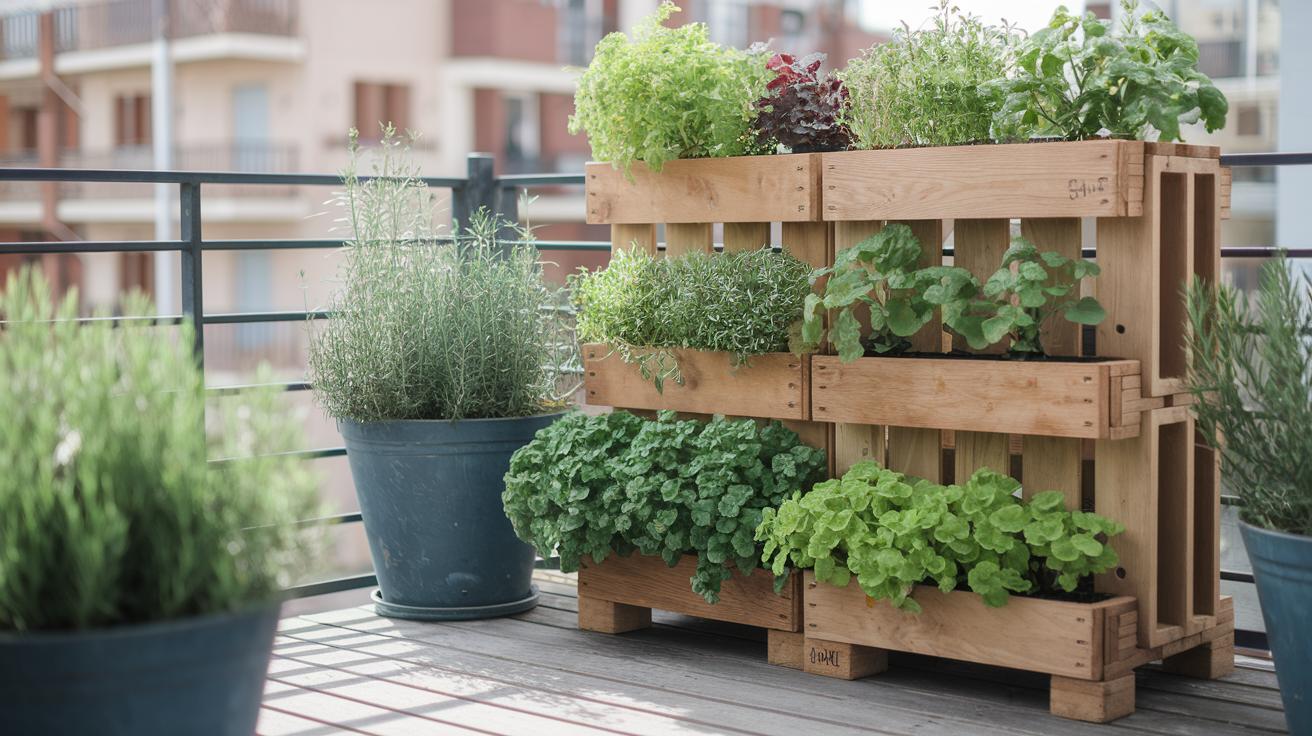
If you’re the hands-on type, DIY kits made of wood or plastic start around $30 and can run up to $150. You’ll spot basic panels or pallet conversions at hardware stores and online. They usually arrive with pre-cut boards or trays, just perfect for a Saturday project with your hand tools. And if you like to tinker, grab some recycled lumber and PVC bits. Paint them your favorite color, shape them any way you like.
Ready-made vertical herb garden kits cost about $100 to $300. Many come as stackable tower modules or hydroponic towers that water themselves. If framing feels like too much work, check out best vertical herb garden kits. They show up with planters, fittings, and drip-irrigation lines already in place.
For a freestanding look, bamboo lattice structures or rattan planter boxes add an eco-friendly, decorative touch. These run between $50 and $120 and look charming on patios or balconies. They hold lighter pots and trailing vines, great for herbs or small flowers.
If you need something built to last and carry heavier plants, custom metal or composite frames start at $200. You’ll get corrosion-resistant brackets and UV-safe finishes that need almost no upkeep. Just know you’ll need power tools or a pro to install them.
Pick what feels right for your space and skill level. DIY gives you the most budget wiggle room. Kits get you growing fast. Premium materials deliver a long-lasting, high-capacity green wall.
Final Words
In the action, we weighed cedar, steel, PVC, fabric and composite setups against cost, lifespan and weight limits.
Then we dove into wooden slats, metal grids, plastic panels and fabric pockets so you know what to pick for your space.
We walked through waterproof layers, UV coatings, drainage and load checks along with installation steps.
We even sized up ready-made kits versus DIY sourcing.
Now you have the scoop on the best materials for vertical garden structures. Happy planting!
FAQ
What materials hold the most weight in a vertical garden?
Metal frameworks like galvanized steel and aluminum support over 100 pounds per panel, making them ideal for heavy plants and long-term setups.
How durable are different vertical garden materials?
Wood types such as cedar or redwood last 10–15 years with sealing. Composite wood–plastic blends endure 15–20 years. Fabric pockets require replacement every 2–3 years, and plastic panels resist moisture but need UV coatings.
What’s the cost range for building a vertical garden by material?
Costs vary by material: wood ranges $30–100, metal frameworks $50–200, plastic systems $20–100, fabric pockets $30–150, and composite boards $100–300.
How can I prevent moisture damage and ensure proper drainage?
Install a waterproof membrane behind panels, add a drainage layer with geotextile fabric or weep holes, angle trays for flow, and test irrigation to keep water away from walls.
What’s the simplest DIY option for a vertical garden?
Repurpose shipping pallets by cleaning, sealing, and fitting fabric pockets or pots. This creates a cost-effective, beginner-friendly structure for light plants like herbs and succulents.
Should I buy a kit or source materials myself?
Commercial kits start at $100 and include stackable or hydroponic modules, while DIY sourcing costs $30–150 for panels or pallets. Kits offer convenience; DIY gives budget flexibility and customization.
How do I maintain metal and wood vertical garden frames?
Inspect and touch up protective coatings on metal frames, seal wood surfaces each year, clear drainage channels, and check brackets for corrosion.
How much load can fabric pockets hold and which plants suit them?
Felt or polyester pockets hold under 20 pounds each, making them ideal for light herbs, lettuce, and small succulents that benefit from good drainage and airflow.

